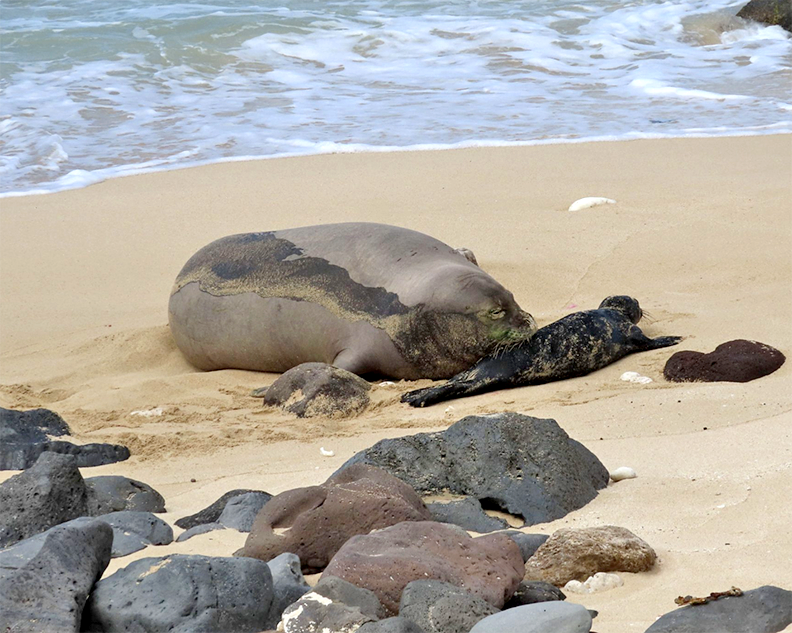By Léo Azambuja

Nancy Kanna, left, and Ruby Pap, two of the many organizers of Kaua‘i’s March for Science, endured the rain with a smile.
Let’s get a few things straight. The Earth is neither flat nor the center of the universe, dinosaurs did roam the Earth millions of years ago, humans and apes evolved from a common ancestor and global warming is real.
We know all that because of science, real science rather than alternative facts.
Science is like chickens on Kaua‘i. It’s everywhere. Pretty much every aspect of our daily lives is possible because of science. It allows us to produce food, build our transportation systems, manufacture clothes, create communication systems, develop medicines, and the list goes on.
In many cases, our lives are literally possible because of science. I’m one of those cases; I was born through a C-section, a procedure that in the past would usually kill the mother and the child. Science has perfected it, making it much safer today.
As we move forward as a society, we have to adjust and adapt to changes in the environment around us, from the tiniest viruses and microbes to the largest natural disasters. Our main line of defense is science; not prayers, bombs or political agendas. It’s science that will save us.
Last month, I was humbled to see the entire nation — and a few hundred Kaua‘i residents — make a case for science during the March for Science. Though the event was billed as a non-partisan affair, it was clearly motivated by the White House’s skepticism of man-made global warming and their willingness to cut government funding to agencies that are vital to scientific advancement.
One of those agencies is the National Oceanic and Atmospheric Administration. The role NOAA plays in our communities in Hawai‘i cannot be overstated. We live in constant threat of hurricanes, tropical storms, flash floods and tsunamis. This is when NOAA can save lives by monitoring the environment and warning our communities way ahead disaster strikes.
NOAA also supports programs such as the University of Hawai‘i Sea Grant College Program, which plays a huge role in local communities in Hawai‘i — including Kaua‘i — by providing invaluable data for coastal developments through its extension program. In Hawai‘i, their work is crucial to avoid urban catastrophes a few generations down the line, as the ocean continues to rise.
The Kaua‘i UH Sea Grant agent partnered with the county government happens to be Ruby Pap, our science writer at For Kaua‘i. Ruby’s column has shortened a gap between science and community by providing invaluable and useful information on a wide range of subjects. For her efforts, Ruby snatched two different state journalism awards last year; one from the Hawai‘i Publishers Association and another from the Society of Professional Journalists.
According to NASA, another agency being threatened by reduced funding, about 68 percent of the universe is made of dark energy and 27 percent is made of dark matter. The rest, less than 5 percent, is called normal matter; the stuff that makes up the Earth and all we have seen with our telescopes.
Very little is known about dark energy, and scientists can only put a number to it because the way it affects the universe’s expansion. Even less is known about dark matter — scientists know more about what it is not made of than what it really is.

Léo Azambuja
This lack of understanding what makes up most of the universe just means there is a lot more to be known. This doesn’t apply only to the universe; it also applies to our little blue planet. There is so much more to be learned about everything between the atmosphere and the Earth’s core. And we are doing it; we are constantly making new discoveries and inventing new things.
That is why we need to keep supporting science, in every level. Only science can bring absolute enlightenment to the human race. Our evolution as individuals and as a society rests on it.
May the science be with you.
Discover more from ForKauaiOnline
Subscribe to get the latest posts sent to your email.




Leave a Reply